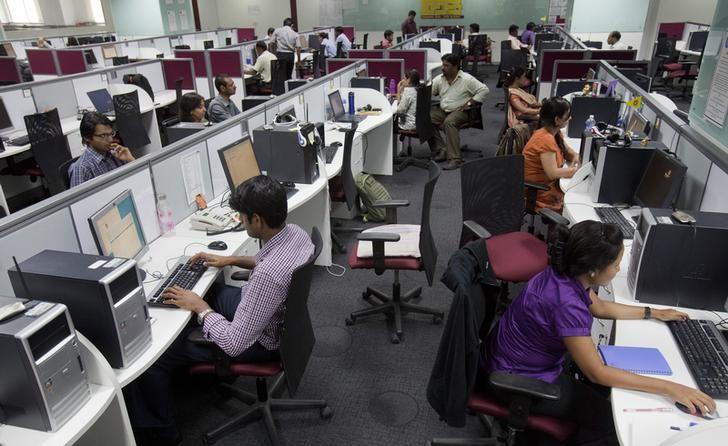(AF) An increasing number of technology roles have come to India, as work from anywhere becomes the new accepted norm in the post-Covid era. And this shift could not only drive double-digit revenue growth for Indian IT services firms in fiscal year 2021-2022 – it could also create many tech jobs in a country struggling to generate gainful employment to its burgeoning workforce, according to a recent report by Goldman Sachs.
Large-scale shifts of IT applications to the cloud and mass adoption of Cloud technologies by legacy IT technology users are accelerating collaboration between IT vendors and customers for building new solutions, and this trend is a new wave that Goldman Sachs calls the “third wave of IT outsourcing.”
This wave, says the analyst firm, would drive double-digit dollar revenue growth for at least the top five Indian IT services companies – namely Infosys, Mindtree, TCS, TechM, and Mphasis – that possess the capability to scale up to take advantage of the trend.
PAST MAJOR SHIFTS
Major global crises in the past have tended to lead to a sharp increase in outsourcing and even offshoring particularly to India, a country that always offered lower wage levels for technology developers compared to the developed markets.
According to Goldman Sachs, the first such wave happened after the Y2K problem in 2000 when India’s IT industry was growing at more than 40% from a small base and very low global penetration, driven largely by labour cost arbitrage.
A second wave started after the global financial crisis in 2008-09 when India’s IT industry grew at more than 15% consistently for about 4 years before sliding down to single digits owing to a general backlash against outsourcing for taking jobs away from the developed markets.
The second wave, however, was driven by both a shift to cloud-based infrastructure and the higher use of automation tools, forcing Indian IT firms to look for new ways to sell IT solutions, shifting from labour cost arbitrage to business transformation through digital technologies.
In the third wave of outsourcing post Covid-19, an increasing number of technology roles globally are finding their way to India as “Work From Anywhere” becomes the new accepted norm.
“Digitisation at scale and Covid-19’s acceleration of work from anywhere has boosted technology demand across industry verticals and geographies. Moreover, IT outsourcing has seen strong pick-ups (lasting at least two years) after previous crises (such as Y2K and global financial crisis),” wrote Sumeet Jain and Saurabh Thadani, in the Goldman Sachs report last week.
“These factors support our forecast of a third wave of IT outsourcing in fiscal year 2021- 2023,” they added.
WORK-FROM-ANYWHERE PARADIGM
The process of digital transformation though, is not a new phenomenon. Digital projects, particularly those around cloud, was gradually happening on a smaller scale over the past five years in short spurts and duration across the IT outsourcing world.
The pandemic, however according to Goldman Sachs, acted as a catalyst in increasing the size and scope for digital transformation, greatly accelerating the shift to cloud that was expected to take 5-10 years earlier, but now could happen over the next three years.
“This transformation will enable touch-less solutions and improve database access from any part of the world for users seeking to Work From Anywhere (WFA),” said the report.
Various surveys have indicated that only 20% to 30% of the IT outsourcing have seen a scaling up of these digital initiatives across the value chain. The rest have yet to undergo a digital transformation, and that would provide “a great opportunity” for Indian IT vendors to expand their digital practice.
Aside from the WFA, two other factors driving the movement of technology roles to India, particularly at a time when Covid has resulted in the expansion of the WFA environment, have been the Trump administration’s strict visa rules, and the significant wage differential in India versus the US.
While, as a consequence of stricter H1B visa rules for Indian IT firms, the denial rate for fresh approvals increased significantly from the low single digits in 2016 to 25% to 30% last year, the average wage differential for technology developers in India and the US shot up five-fold during the time period.
Consequently, Indian IT vendors have been winning multiple large deals in the last few months, which in the next fiscal year, could reflect in a sharp pick-up of dollar revenue growth of over 13% for the Top-5 Indian IT vendors, forecasts Goldman.
DIGITAL INFRASTRUCTURE
Last week, for instance, Infosys reported that it signed a multi-billion-dollar deal with Daimler Corp to transform its technology infrastructure and applications and migrate to a hybrid cloud environment. Wipro, the other prominent Indian IT vendor, also said it is helping German retail major Metro AG build its digital infrastructure in a deal estimated to be $1 billion.
In November, the largest IT company by market capitalisation Tata Consultancy Services, said it signed long-term deals with Deutsche Bank AG and Prudential Financial, after acquiring their IT units.
MIndtree with its focus on digital and Managed Service contracts, Mphasis with its consistent increase in profits margins and direct channel growth, and TechM with the revival in the telecom vertical on 5G roll-outs, are the other vendors that are taking advantage of the third wave, the report noted.
This story was updated on July 22, 2021 to correct style format.
READ MORE:
Global borderless pools of talent






















